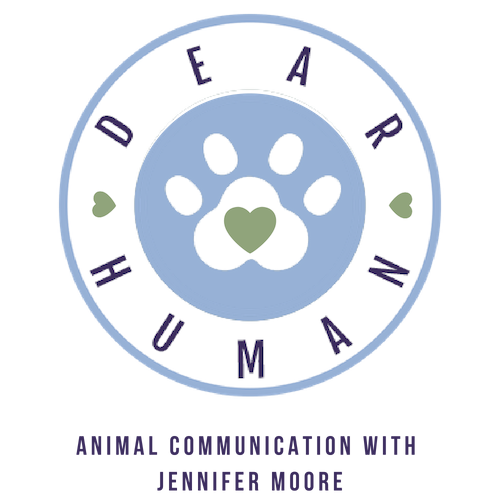Buddy
The day had finally arrived. After selecting a puppy from the photos the breeder provided, Joy and her husband Brad drove two hours to meet who they hoped would be their forever companion.
Joy had wanted a Golden Retriever for as long as she could remember. When the pandemic required that she work from home, it seemed the perfect time to adopt. And there he was, Buddy, the eight-week-old Golden Retriever with the small, white spot on his forehead.
On the trip home from the breeder, Buddy laid quietly on Joy’s lap. She smiled as she held his furry body, imagining the many happy years they would share.
Joy had prepared well before bringing Buddy home, reading books, watching videos on raising a puppy, and consulting with a dog trainer. She bought a crate, puppy treats and pads, toys, a leash and collar, and a soft, cuddly bed. She anticipated many interrupted nights ahead as Buddy grew and adjusted to his forever family.
With a fenced yard and other dogs in the neighborhood, Buddy settled into a routine that included playtime and socializing with other dogs and people. Joy scheduled at-home training sessions for Buddy. She hoped he would learn the basics of being a happy, well-adjusted puppy—responding to commands, getting in and out of a car, and walking on a leash. Every trip to the store included purchasing new dog items: toys, high-quality pet food, expensive bones and chews, beds, car seat covers, harnesses, and pretty collars. She wanted Buddy to be happy in his new home.
As fall turned into winter, Joy felt proud that they never missed a walk no matter what the weather, sometimes taking two or three walks a day. Buddy enjoyed walking with a stick in his mouth (especially one he had found buried beneath the snow).
In quiet moments together, Buddy would drape himself across Joy’s lap as they snuggled together on the couch. He would look into her eyes and lick her face—puppy love!
But, there were bumps along the way. Buddy chewed up a pair of Joy’s glasses, gnawed on her grandmother’s rocking chair, pulled books off the shelf, and stripped veneer from the china cabinet. Buddy feared going downstairs to sit with her and Brad as they watched T.V., resisted getting in and out of the car, and did not want to go upstairs at nighttime. Joy understood this as typical puppy behavior and took it all in stride. She hoped to resolve these behaviors in time with the support of the trainer. But soon, normal puppy behavior gave rise to more puzzling and concerning events.
At times Buddy growled, lunged, and snapped at Joy, tearing holes in her jeans, grabbing her sweater from behind, and ripping the side of her winter coat. She wondered if this was normal.
When she contacted me for a consultation, the love between Buddy and Joy was evident. During our session, Buddy shared that he wanted to be a supportive dog for Joy and Brad, yet also had a lot of energy and didn’t know how to contain it: He was “Growing up as fast as he could.”
He wanted Joy to focus on their bond and not worry if they were doing things perfectly. Joy wondered if Buddy liked his name, and he shared that he was open to a name change, something that reflected the “bigness” that he felt was his essence.
We also discovered in this initial session that the weaning process had been difficult for him. He shared an image with me of spending time alone in a dark kennel and the feeling that if he were a better dog, he would not have been abandoned. This experience left him vulnerable to acting out with aggression, which is not uncommon in both humans and animals who experience a disruption in developing a secure bond. “Would he grow out of this? Could she do something better?” she wondered.
Joy said that the first session was transformational and that Buddy’s behavior shifted. He allowed her to brush him, came when called, and laid his head on her leg for the first time.
But his behavior regressed soon after—he refused to get into the car and resisted her commands.
Joy admitted that she felt afraid of Buddy when he became aggressive, how his behavior reminded her of a childhood experience with an aggressive dog. She contemplated the months they had spent training and said he was a “good dog” maybe 80% of the time, but the other 20%of the time, he was unpredictable and aggressive. On one winter walk, Buddy pulled hard on his leash. Joy fell on the ice and bruised her hip. This prompted her to begin looking at resources for rehoming him as she continued to work with him, knowing that if he bit her that would be the time to let him go.
At the end of another walk, Buddy pulled hard on the leash again. Joy collapsed as she heard her knee pop. She called me in tears, wondering if she needed to see a doctor. Buddy communicated that he knew he was causing Joy stress and couldn’t promise that he wouldn’t do this again. When he pulled her sideways on a walk the next day, Joy said she fell several times as she tried to get up, still hurting from her injuries on their previous walks.
Joy realized after talking with a friend that her life was becoming unmanageable: Her sleep was affected, and she was having difficulty focusing on her work. Most concerning, she was becoming increasingly fearful of Buddy’s behavior.
She had him neutered as soon as he was old enough. On another walk soon after, he pulled her again, and she fell flat on the pavement, sobbing at the realization that she could no longer keep him. She contacted the breeder, who came and picked him up the next day.
We had a brief final communication session on the day Buddy left, and he told Joy that he was worried that if he were to stay in her and Brad's home, the stressful dynamics between them might sever their bond. He didn’t want that to occur, nor did he want his legacy to be that Joy would close her heart to adopting another dog in the future.
Buddy quickly found a new home on a farm where the one-year-old resident Golden is his half-brother. From the photos Joy has received, Buddy, who has been renamed, looks happy, and Joy’s injuries are healing.
There is loss, Joy has told me, of Buddy himself, and of the years they might have had together. The house is quieter now, and she reflects on how they forever touched each other’s lives as they move forward on different paths.
Joy has shared that the biggest challenge for her now is the shame she feels, having heard that “There are no bad dogs, only poorly trained ones.” Though any relationship ending brings up questions, in the domain of human and animal connections, animals also make choices within the conditions that we humans provide them. Some animals either can’t or aren’t willing to change their behavior, and if they are, sometimes need more support to do so than their humans can provide. Recognizing the gap between the pets we want and the pets we may have, presents a difficult choice. Letting an animal go is never easy and sending them forth with love is a generous and caring option.
Thank you, Joy and Brad, for sharing your and Buddy’s story.


